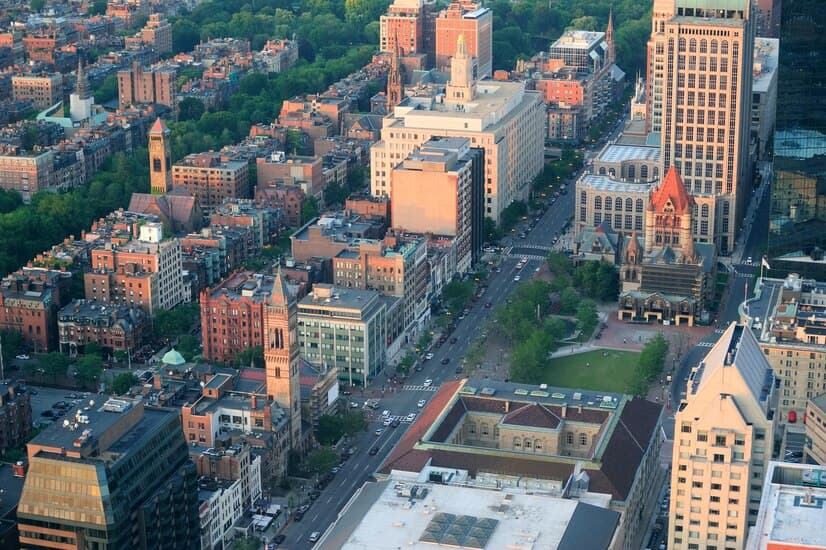
Nestled in the heart of the United States, Pennsylvania stands as a testament to history, diversity, and vibrant urban landscapes. In exploring the top 11 largest cities in Pennsylvania by population, this comprehensive journey delves into the unique stories, cultural nuances, and economic dynamics that define each city.
As we embark on this exploration, we unravel the rich tapestry that is Pennsylvania’s urban identity.
What Defines Pennsylvania Cities by Population?
Understanding the cities dominating Pennsylvania involves decoding more than just population statistics. Each city resonates with a distinctive vibe, shaped by history, culture, and economic pursuits. Let’s unravel the essence of Pennsylvania cities by population.
Philadelphia: The Keystone State’s Megacity
Philadelphia, the City of Brotherly Love, boasts a population exceeding 1.5 million, making it the largest city in Pennsylvania.

- Cultural Hub: Beyond its numerical significance, Philadelphia stands as a cultural beacon, with iconic historical sites like Independence Hall and the Liberty Bell. The city seamlessly weaves its rich history with a vibrant contemporary arts scene, fostering a cultural richness that resonates with both locals and visitors;
- Economic Powerhouse: Philadelphia’s influence extends beyond its cultural significance; it is an economic powerhouse. The city thrives in sectors such as healthcare, education, and technology, playing a pivotal role in shaping the Northeast Corridor’s economic landscape.
Philadelphia, with its diverse neighborhoods like South Philly and Fishtown, reflects a mosaic of communities, each contributing to the city’s cultural vibrancy. From the Italian Market’s bustling streets to the art-centric atmosphere of Old City, Philadelphia invites exploration.
Discover what the population in Pennsylvania cities right now
Pittsburgh: Industrial Heritage and Modern Renaissance
- Population: With over 300,000 residents, Pittsburgh, once known for its steel industry, has transformed into a city at the forefront of technology and innovation;
- Cultural Transformation: The Steel City has undergone a remarkable cultural transformation. The Andy Warhol Museum, dedicated to the Pittsburgh-born artist, serves as a testament to the city’s embrace of modern artistic expressions. Pittsburgh’s downtown, once dominated by steel mills, now boasts a skyline adorned with modern architecture;
- Technological Innovation:Pittsburgh’s economic transition is marked by a focus on technology. Home to Carnegie Mellon University, the city attracts talent and companies at the forefront of technological innovation, contributing to its status as a tech hub.
Pittsburgh’s unique neighborhoods, from the historic charm of the Strip District to the modernity of Lawrenceville, provide residents with a diverse urban experience.
Allentown: A Growing Urban Hub in Eastern Pennsylvania
Allentown, with a population exceeding 120,000, positions itself as a growing urban center in Eastern Pennsylvania.

- Economic Revitalization: Allentown has experienced significant economic revitalization in recent years. The development of the PPL Center and the rejuvenation of the downtown area have attracted businesses and residents alike. The city’s commitment to fostering economic growth is palpable, making it a compelling destination for those seeking urban opportunities;
- Cultural Diversity: Allentown’s cultural scene reflects its diverse population. Events like the Allentown ArtsFest celebrate various artistic expressions, creating a cultural mosaic that adds vibrancy to the city’s urban fabric.
Allentown’s neighborhoods, such as the historic Old Allentown district, showcase a blend of architectural heritage and contemporary living.
Erie: Gateway to the Great Lakes
- Population: Erie, with over 96,000 residents, stands as Pennsylvania’s gateway to the Great Lakes;
- Waterfront Charm: One of Erie’s standout features is its scenic waterfront, featuring Presque Isle State Park. This natural gem not only adds to the city’s charm but also draws outdoor enthusiasts year-round. Erie’s residents enjoy the unique experience of having access to a Great Lakes coastline within Pennsylvania’s borders;
- Economic Impact: The city’s economy is closely tied to shipping, manufacturing, and tourism. Presque Isle’s draw contributes to Erie’s economic stability, attracting visitors from across the region.
Erie’s neighborhoods, such as the historic West 6th Street district, provide a glimpse into the city’s historical roots.
Reading: A City with Rich Cultural Heritage
- Population: Surpassing 90,000 residents, Reading is a city with a rich cultural heritage and a diverse population;
- Cultural Enrichment: Reading’s cultural landscape includes institutions like the Reading Public Museum. This museum not only showcases art and science but also reflects the city’s commitment to cultural enrichment. Reading’s residents have access to a range of cultural experiences that contribute to the city’s identity;
- Community Engagement: Reading actively engages its community through events like the Reading Fire + Ice Fest. These initiatives foster community engagement and showcase the city’s commitment to providing diverse and enriching experiences.
Reading’s neighborhoods, such as Centre Park Historic District, provide glimpses into the city’s architectural history.
Scranton: From Industrial Roots to Cultural Revitalization
- Population: Scranton, with over 77,000 residents, epitomizes a city transitioning from its industrial roots to a cultural revitalization;
- Cultural Resurgence: Scranton’s downtown area has experienced a cultural resurgence. The Steamtown National Historic Site and Lackawanna Coal Mine Tour offer glimpses into the city’s industrial past, while the Scranton Cultural Center and First Friday events highlight its contemporary cultural scene;
- Economic Diversification: Scranton actively pursues economic diversification. The city’s educational institutions, including the University of Scranton, contribute to the growth of sectors like healthcare and education.
Scranton’s neighborhoods, such as the Hill Section, reflect the city’s architectural heritage and evolving urban landscape.
Bethlehem: Historic Charm with Economic Vigor

Bethlehem, with a population exceeding 75,000, seamlessly combines historic charm with economic vigor.
Bethlehem’s historic district, including the Moravian Museum and Colonial Industrial Quarter, reflects the city’s rich colonial history. The city’s commitment to preserving its historical sites adds to its allure.
Bethlehem has witnessed significant economic development, particularly with the transformation of the Bethlehem Steel site into the SteelStacks arts and cultural campus. This redevelopment has not only preserved industrial heritage but also contributed to the city’s economic vitality.
Bethlehem’s neighborhoods, such as West Bethlehem, showcase a blend of historical architecture and modern amenities.
Bethlehem is in the top of best places for living in 2023, discover more in this review
Lancaster: Blending History, Culture, and Modernity
- Population: Lancaster, with a population exceeding 59,000, is a city that skillfully blends history, culture, and modernity;
- Cultural Fusion: Lancaster’s cultural fusion is evident in its diverse population and events like the Lancaster International Short Film Festival. The city actively promotes cultural exchange, creating an atmosphere of inclusivity;
- Urban Development: The city’s ongoing urban development projects, like the Lancaster Square redevelopment, highlight Lancaster’s commitment to modernity while preserving its historical roots.
Lancaster’s neighborhoods, such as the Lancaster County Central Park, provide residents with a mix of urban amenities and natural beauty.
Harrisburg: The Capital City on the Susquehanna
Harrisburg, the capital city of Pennsylvania, boasts a population exceeding 50,000 residents. Harrisburg serves as a governmental nexus, housing the Pennsylvania State Capitol and playing a crucial role in the state’s political landscape.
The city’s economy is diverse, with healthcare, government services, and tourism contributing to its economic significance.
Harrisburg’s neighborhoods, including the historic Old Uptown District, reflect the city’s historical and contemporary significance.
York: From Colonial Past to Present Dynamism
- Population: York, with a population over 44,000, traces its history from its colonial past to a city experiencing present dynamism;
- Historical Significance: York’s Colonial Complex and historical architecture reflect the city’s colonial heritage, attracting history enthusiasts and tourists;
- Modern Growth: The city’s modern growth includes economic developments in manufacturing, healthcare, and education, contributing to York’s present dynamism.
York’s neighborhoods, such as Olde Towne East, showcase a blend of historical charm and modern urban living.
Wilkes-Barre: A Gem in the Wyoming Valley
Wilkes-Barre, with over 40,000 residents, stands as a gem in the Wyoming Valley, balancing history with modern urban living.

Wilkes-Barre’s cultural scene includes venues like the F.M. Kirby Center for the Performing Arts, providing residents with a range of artistic experiences. The city actively promotes cultural events and community engagement.
Economic landscape is diverse, with a focus on industries such as healthcare, education, and manufacturing. The city’s proximity to natural attractions adds to its appeal.
Wilkes-Barre’s neighborhoods, such as the Historic District, offer residents a mix of historical charm and contemporary amenities.
Conclusion
Pennsylvania’s cities by population from a diverse tapestry, each weaving its unique narrative of growth, culture, and economic vitality. From the historical significance of Philadelphia to the modern resurgence of Scranton, these cities embody the spirit of the Keystone State, showcasing resilience, innovation, and a commitment to a vibrant future.
As Pennsylvania continues to evolve, its cities stand as dynamic hubs, inviting residents and visitors to explore the rich fabric of the state’s urban landscape.
Last modified: February 29, 2024

